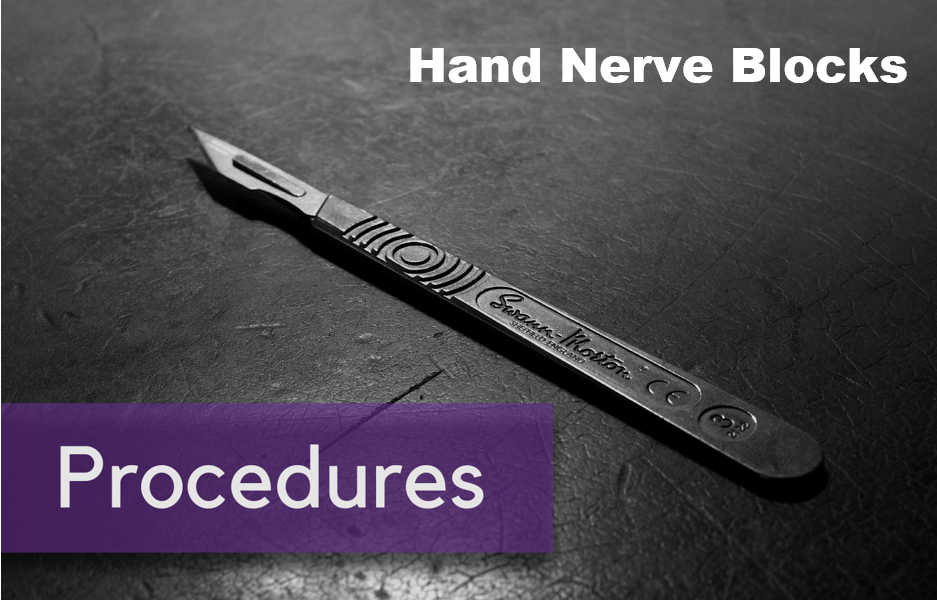Written by: Tori Adomshick, MD (NUEM ‘27) Edited by: David Adler, MD (NUEM ‘25)
Expert Commentary by: David Haidar, MD
Expert Commentary
Thank you Dr. Adler and Dr. Adomshick for this excellent NUEM Blog Post about the fascia iliaca block!
Nerve blocks are an excellent alternative to sedation for medically complex patients requiring surgery or bedside reduction. The femoral nerve and fascia iliaca blocks are particularly great in the wintertime when everyone’s slipping and sliding and breaking their femurs. These blocks are very similar, however, there are a few key differences. For one, the fascia iliaca block covers the lateral cutaneous femoral nerve, which in theory gives you better lateral skin coverage. My favorite reason for choosing the fascia iliaca over the femoral nerve block is that you are staying far away from important structures (femoral artery and nerve). So, if you’re teaching someone relatively new to ultrasound guided nerve blocks, or if you just have poor needle visualization for whatever reason – the fascia iliaca block is the way to go!
As always, the most important steps are the setup. Make sure your ortho colleagues have examined the patient beforehand and gotten a thorough neurovascular exam, and make sure you do a pre-scan to identify landmarks and optimal positioning. Depending on where you work, anticoagulation might be a relative contraindication so make sure you know what your institutional guidelines are! Then, use whatever tool you prefer to calculate the maximum dose of anesthetic (Bupivicaine or Ropivicaine). Make sure to factor in any short acting lidocaine if you’re using this to create a skin wheal. My personal favorite app is the SafeLocal app, which lets you choose meds, concentration, comorbidities, and gives you a safe max dose. This is a large volume plane block so you’ll want to supplement whatever anesthetic total you use with normal saline to reach about 40-60 cc’s to inject. Some people just mix it all into one syringe, and some people use a stopcock with 2 separate syringes so that they use saline to hydro-dissect to save on anesthetic if limited on volume. People used to mix lidocaine with long acting with the thought that you’d get faster relief, but there’s no data to support this so I think this has fallen out of favor for the most part.
I typically find most success by attempting to frog leg the patient’s affected leg, scanning proximally and medially until you have a clear visualization of the femoral vein medially, then femoral artery laterally, and then the femoral nerve lateral to the artery. Once you’ve located those 3 structures, slide laterally until you see the iliopsoas and you have your target. Add color doppler to your screen to make sure there’s no stray vessels along your trajectory that you may hit! You’ll do this block in-plane (long axis), so make sure you’re positioned appropriately before needle insertion!
When advancing with the needle make sure to take a shallow approach, breaking skin 1 cm away from the probe, and slowly advancing. You’ll feel a first pop, which is the fascia lata, and then a second pop which is your fascia iliaca. Make sure to stay flat to avoid injecting
directly into muscle belly! At this point you’ll want to draw back to make sure you don’t get blood, and then inject your long-acting anesthetic of choice and successfully complete your fascia iliaca block!
This block provides excellent relief for patients in the preop and postop setting, and can reduce opiate use in the hospital, which is great for our patients who may be at risk for delirium or any of the other many opioid side effects.
Dr. David Haidar, MD
Clinical Assistant Professor
Feinberg School of Medicine
How To Cite This Post:
[Peer-Reviewed, Web Publication] Adomshick, T. Adler, D. (2025, May 10). Fascia Iliaca Block. [NUEM Blog. Expert Commentary by Haidar, D]. Retrieved from http://www.nuemblog.com/blog/fascia-iliaca-block














